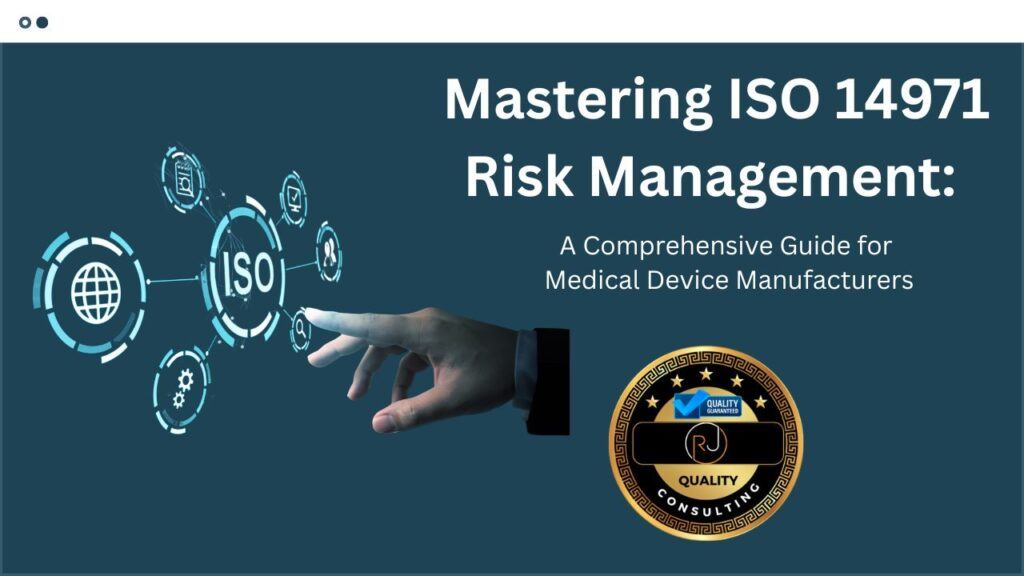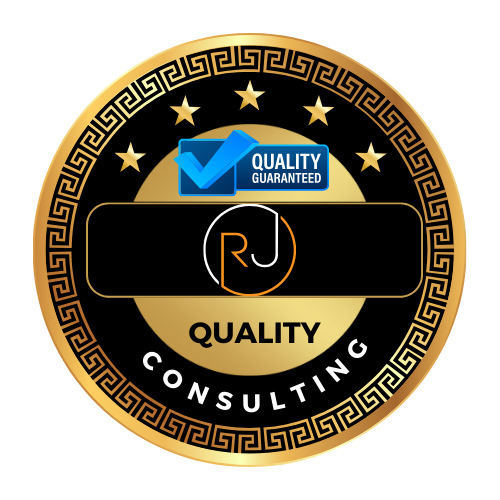Mastering ISO 14971 Risk Management: A Comprehensive Guide for Medical Device Manufacturers
ISO 14971 risk management plays a big role in ensuring that medical devices are safe for patients. When you work with this standard, you are getting into a process that carefully evaluates risks and helps design safer devices. I have seen how thoroughly following ISO 14971 can provide peace of mind and build trust between manufacturers and users.

Understanding the Core Concepts of ISO 14971
ISO 14971 is all about identifying, assessing, controlling, and monitoring risks throughout the lifecycle of a medical device. I find it helpful to think of this as a systematic approach that covers every phase from design to post-market surveillance. Risk management isn’t new in this industry, but ISO 14971 offers a structured method that is widely recognized around the world.
The process starts with risk analysis. This involves looking at potential hazards, assessing the likelihood of their occurrence, and estimating the severity of the consequences if these risks were to happen. By understanding these factors, manufacturers can prioritize their efforts more effectively.
Risk evaluation is the next step, where you decide whether the risk is acceptable or whether additional measures are needed. Controls are then implemented to lower the risk to acceptable levels. These controls might range from design changes to user training or implementing additional warnings.
📘 ISO/IEC 17025 Quality Manual Template
Accelerate your lab’s accreditation process with our comprehensive Quality Manual Template, designed to align with ISO/IEC 17025:2017 standards.
- Fully editable and customizable to fit your laboratory’s needs.
- Includes all necessary procedures, forms, and policies.
- Structured to facilitate easy implementation and compliance.
- Developed by experts with extensive ISO/IEC 17025 experience.
Getting Started with ISO 14971 Risk Management
Before getting into risk management procedures, it’s important to familiarize yourself with the basics of ISO 14971. This standard was developed specifically for medical devices and emphasizes a proactive rather than reactive approach. For newcomers to the field, understanding the standard’s purpose can set the stage for a smoother implementation.
I suggest starting with a clear outline of the process. Identify the scope of the device, gather a multidisciplinary team, and set clear goals for risk management. Remember that the process is iterative. As you gather more data, you might need to revisit your assessments and update risk controls.
The structure of ISO 14971 aligns closely with the needs of modern medical device development. Whether you are a seasoned professional or new to the field, having a clear, documented plan can really help streamline your work.
Steps to Implement ISO 14971 in Your Organization
Implementing ISO 14971 risk management involves a series of carefully planned steps, each building on the previous one. Here’s how I break down the steps to give you a clear picture:
- Establish the Risk Management Process: Define the scope and objectives of your risk management activities. This includes setting up a risk management file that tracks every decision made along the way.
- Risk Analysis: Identify and list out all potential hazards associated with your medical device. Analyze the likelihood and impact of each risk. This helps prioritize which risks need the most attention.
- Risk Evaluation: Based on your analysis, decide which risks are acceptable and which need further action. You may use risk matrices or other scoring systems to measure risk levels.
- Risk Control Measures: Implement controls to reduce identified risks. These could be technical, such as design changes, or procedural, such as improved instructions for use.
- Residual Risk Evaluation: After controls are in place, assess the remaining risk. Making sure that even the residual risk is acceptable is key to overall device safety.
- Post-Market Surveillance: Continue to monitor the device once it hits the market. Feedback from actual use can provide insights and lead to further refinements in risk management strategies.
Going through these steps prepares your organization to manage risk effectively. Each step builds confidence that the device can be used safely by the intended audience.
Risk Management in Medical Device Development
Risk management isn’t just a checklist item. In medical device development, it touches every aspect of the design and production process. I have observed that companies taking risk management seriously often find that it improves both the safety and functionality of their devices. For those organizations who are manufacturing medical devices in the US need to also consider risk management in ISO 13485 as well.
An important part of this process is understanding the binding nature of ISO 14971 risk management and how it integrates into other quality management systems. It guides manufacturers to plan for potential failures even before the device is on the market. In some cases, a well-implemented risk management strategy can even speed things up during regulatory approval because authorities see that potential hazards have already been addressed.
One handy way to think about this is by breaking down risks into categories. For instance, you might classify risks by their source: mechanical, electrical, or software-related hazards. Each category can then be tackled with targeted controls. This method makes the overall process much more manageable.
Common Considerations and Challenges
There are several things you might want to consider when working with ISO 14971 risk management. Every organization has its own challenges, and I’ve noticed a few common themes that tend to come up during implementation.
- Complexity of Device Use: Modern medical devices often include multiple functions and features that can increase potential risks. Keeping track of every possible hazard requires attention to detail and strong documentation practices.
- Interdisciplinary Coordination: Risk management involves experts from various fields. Ensuring clear communication among these groups is something that companies often work to improve over time.
- Keeping Documentation Updated: As the design evolves, so do potential hazards. It is important to have a living document that is continuously updated with new findings and corrective actions.
- Post-Market Feedback: Once your device is in the market, real-world feedback can highlight risks that were not fully considered during development. Establishing a solid process for obtaining and responding to this feedback is very important.
Breaking down these considerations can help address each challenge methodically. I find that regular meetings and audits contribute to maintaining a clear view of the risk profile throughout the lifecycle of a device.
Keep in mind, ISO 14971 and ISO 13485 are not the only standards that require risk management. ISO 9001 and ISO 17025 risk management are in full swing as most of these quality standards have adopted a risk-based thinking approach to improvement and corrective action.
Complexity of Device Use
With devices growing in sophistication, the number of features can sometimes lead to unforeseen risks. A thorough review of each component is important. In practice, this might mean scheduling regular design reviews and including feedback from end users who interact with the device in everyday settings.
Interdisciplinary Coordination
It is essential to bring together engineers, quality assurance staff, and regulatory experts. This collaborative approach can reveal potential hazards that might not be obvious when looked at individually. Effective teamwork makes it easier to adopt a cohesive risk management strategy.
Documentation Challenges
Documentation is at the heart of ISO 14971. Ensuring that records are current and detailed can be a significant challenge. Many organizations adopt digital tools to update and manage risk management files in real time. Automating parts of this process can minimize human error and save time during audits or reviews.
Post-Market Feedback Evaluation
Even after the device is released, risk management does not end. Monitoring real-world performance through post-market surveillance is essential. Often, this involves collecting user feedback, analyzing reports from service teams, and revising risk management plans based on new information.
Keeping these challenges in mind and planning for unexpected issues is very important. A proactive approach makes it much easier not only to comply with standards but also to create products that users can trust.
Advanced Tips and Best Practices for ISO 14971 Implementation
For those who have the basics down, there are several strategies that can help refine your ISO 14971 process. I have found that a few advanced tips really make the process more efficient and effective:
Make the most of Automated Tools: Software solutions can help you maintain risk management documents and even automate parts of the hazard analysis. These tools are especially useful in tracking changes over the lifecycle of a device.
Integrate with Overall Quality Systems: Combining risk management with quality assurance and regulatory compliance systems can streamline your workflow. When different systems work together, the overall process becomes more transparent and easier to audit.
Continuous Training: Keeping your team updated on the latest risk management techniques and changes in regulatory guidelines is very valuable. Regular training sessions can help everyone stay on the same page and ensure the process remains robust over time.
Focus on Proactive Analysis: Instead of waiting for issues to occur, focus on identifying potential problems before they impact the product. Using tools like Failure Mode and Effects Analysis (FMEA) can predict possible failures and help tone down potential issues early.
These best practices are steps toward a more mature and capable risk management program. They emphasize the need to view ISO 14971 as a living process that grows with your organization and your devices.
Frequently Asked Questions
Question: What exactly is ISO 14971?
Answer: ISO 14971 is a standard that specifies the process for identifying hazards, evaluating and controlling risks related to medical devices. It helps in managing risks at every stage of the product lifecycle.
Question: How can ISO 14971 benefit my organization?
Answer: Using ISO 14971 can help improve patient safety, simplify the regulatory process, and foster a culture of risk awareness. It ensures that potential hazards are systematically identified and managed, which can build trust with regulators and end users.
Question: Do I need special software to implement ISO 14971?
Answer: While you can manually document and manage risk assessments, many organizations find that automated tools can make the process more efficient. These tools can help track changes, manage large amounts of data, and ensure consistency across the project.
Question: How often should I update my risk management file?
Answer: Risk management is an ongoing process. The risk management file should be updated regularly, especially when there are changes to the device design or when new data from post-market surveillance becomes available.
Additional Insights and Future Considerations
As the field of medical device development continues to grow, it becomes very important to not only follow established standards like ISO 14971 but also to constantly review and refine your risk management practices. Innovations in technology and evolving regulatory requirements demand that organizations remain flexible and responsive. Taking time to think over your risk management approach allows your team to spot potential areas for improvement and fill in the gaps where necessary.
Modern digital tools have changed the game. They make it easier to gather up historical data, analyze trends, and even predict areas where the risk might spike. By using these tools wisely, companies can pull together insights from across various departments and get a feel for where improvements are needed. Regular internal audits and workshops that bring team members together can help spark ideas to mix in some variety to traditional practices.
Moreover, educating and training your team is very important. Regular sessions that encourage staff to ask questions and share their experiences can take the overall program up a notch. When everyone in the organization understands their role in risk management, it builds a culture that is both proactive and resilient. This approach not only helps in meeting current standards but also primes your organization for future challenges.
Looking forward, it is also wise to pay attention to emerging trends in medical technology. As devices become more interconnected and complex, maintaining clear, up-to-date risk assessments will be key. Organizations that commit to staying sharp and continually updating their strategies tend to see benefits in regulatory inspections and customer satisfaction. This forward-thinking attitude can set a strong foundation for long-term success in a competitive landscape.
Conclusion
Embracing ISO 14971 risk management is a smart move for any organization in the medical device industry. It provides a methodical approach to identifying hazards, implementing controls, and continuously monitoring risks. I believe that a well-structured risk management process not only leads to safer devices but also boosts confidence among end users and regulatory bodies.
Taking the time to understand each component of ISO 14971 and applying advanced best practices can really refine your process. Whether you are just starting out or already have a risk management system in place, reconsidering your approach can reveal opportunities for improvement and innovation. Start your adventure with ISO 14971 today. See how a well-executed risk management plan can transform the way you approach medical device safety!
🕒 Book Your Free 45-Minute Consultation
Have questions about ISO/IEC 17025 or ISO 9001 implementation or accreditation? Schedule a free 45-minute consultation with me to discuss your Company or laboratory’s needs and how we can achieve compliance together.
Schedule Your Consultation





